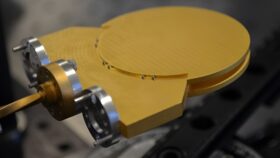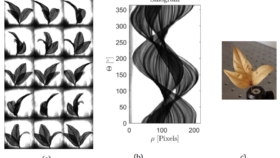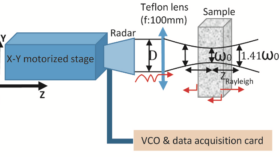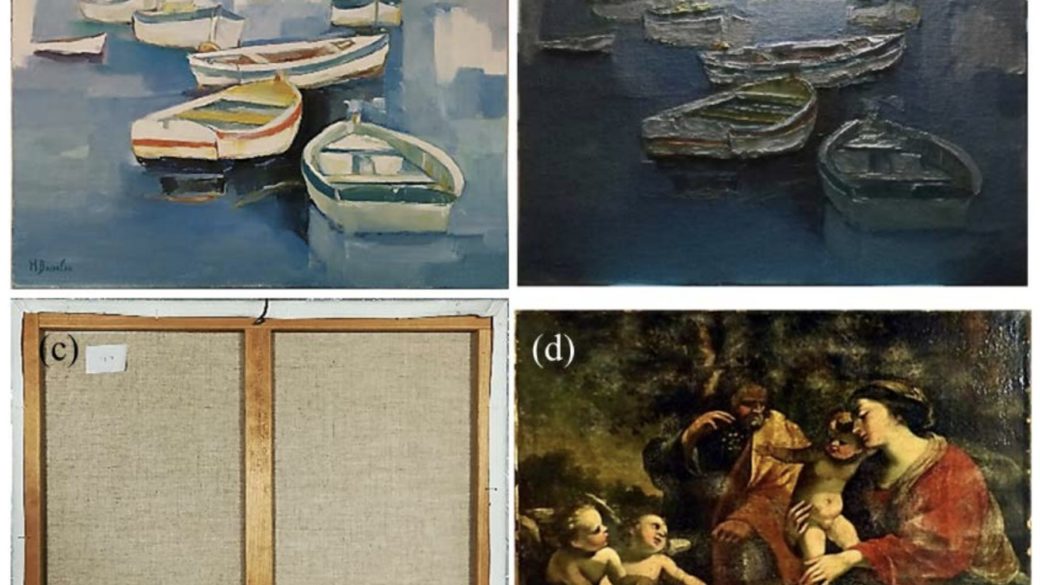
Terahertz frequency modulated continuous wave imaging advanced data processing for art painting analysis
In this paper, we focus on data processing applied to terahertz FMCW measurement of a painting.
Investigated paintings
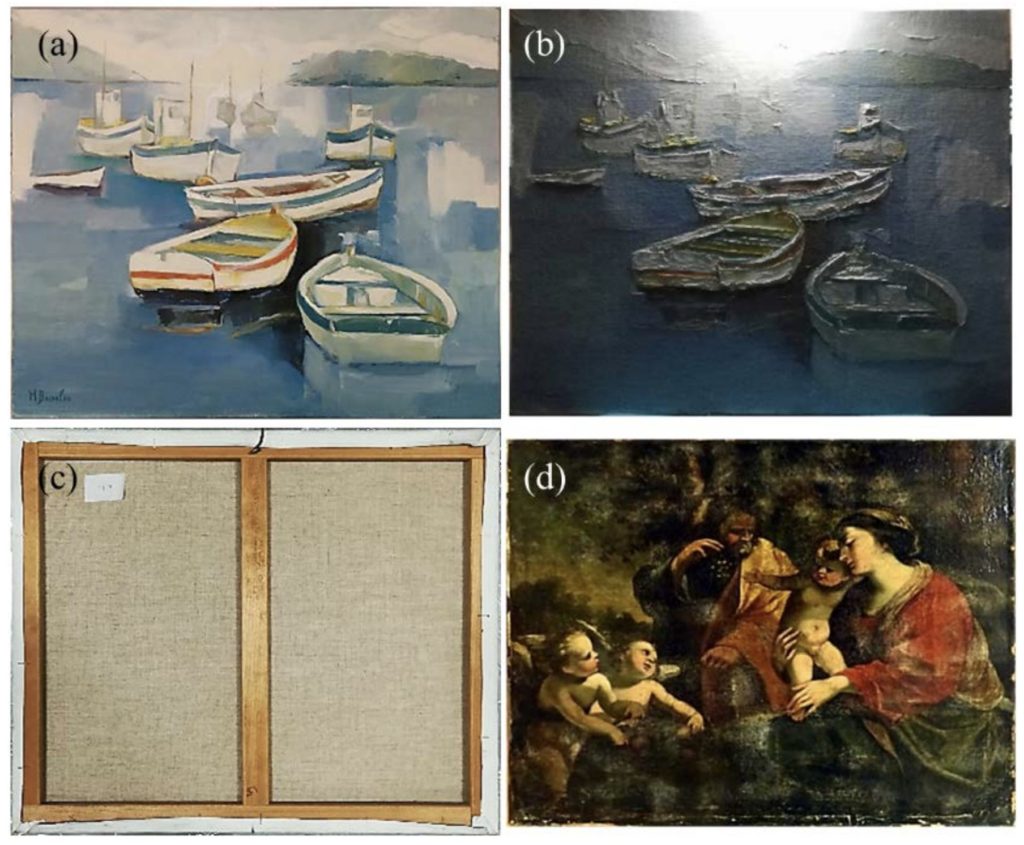
FMCW radar processing
The proposed approach consist to use longitudinal information of FMCW signal to adjust amplitude. This calibration process was tested on a stepped target and then on the investigated painting, giving a more homogeneous result, allowing to see the details with a batter contrast.
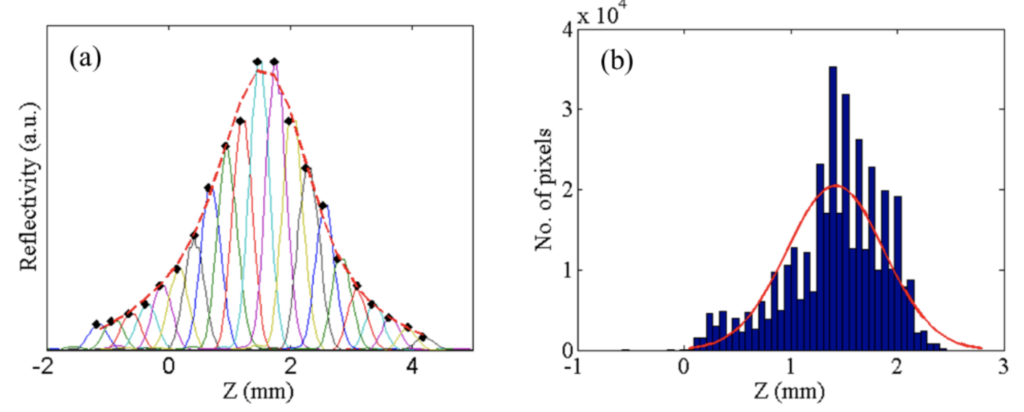
transceiver lenses at step of 2.54 mm; values of the signal maxima (black dots); Gaussian fit of signal maxima (dashed red line). b. Histogram of the distribution of the position of the
maximum of the signals along the Z-axis for the investigated painting; the red curve shows the normal distribution fit.
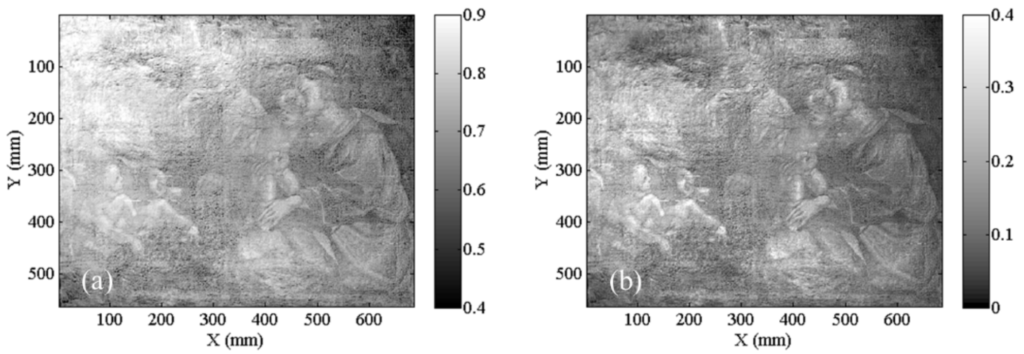
Terahertz image after the signals correction
Conclusion
Terahertz frequency modulated continue waves system (300 GHz) has been proficiently applied to the investigation of two easel paintings of different ages. Both the thickness variations of the paint layer and the nature of the artistic materials used are capable of providing a contrast in the recorded THz images, thus giving important information about the painting structure and composition. The information content of the obtained THz images has
been fully inspected by selecting the appropriate THz image parameters. In addition, we have demonstrated how the Gaussian fit of the recorded signals provides more precise values for the determination of the location of the signal maximum and for the signal FWHM, thus significantly improving the level of the detail held by the THz images. The dependency of the amplitude of the reflected signal on the beam optical path has been characterized and modeled for the scanner used during the experiments. Thus, we have successfully corrected the amplitude of the recorded signals for the displacement of the object surface from the beam focal point by means of the calculated Gaussian model. The access to subtle hidden technical information about painting gives a new interest for FMCW imaging in heritage science.
Dandolo, C. L. K., Guillet, J. P., Ma, X., Fauquet, F., Roux, M., & Mounaix, P. (2018). Terahertz frequency modulated continuous wave imaging advanced data processing for art painting analysis. Optics express, 26(5), 5358-5367.
